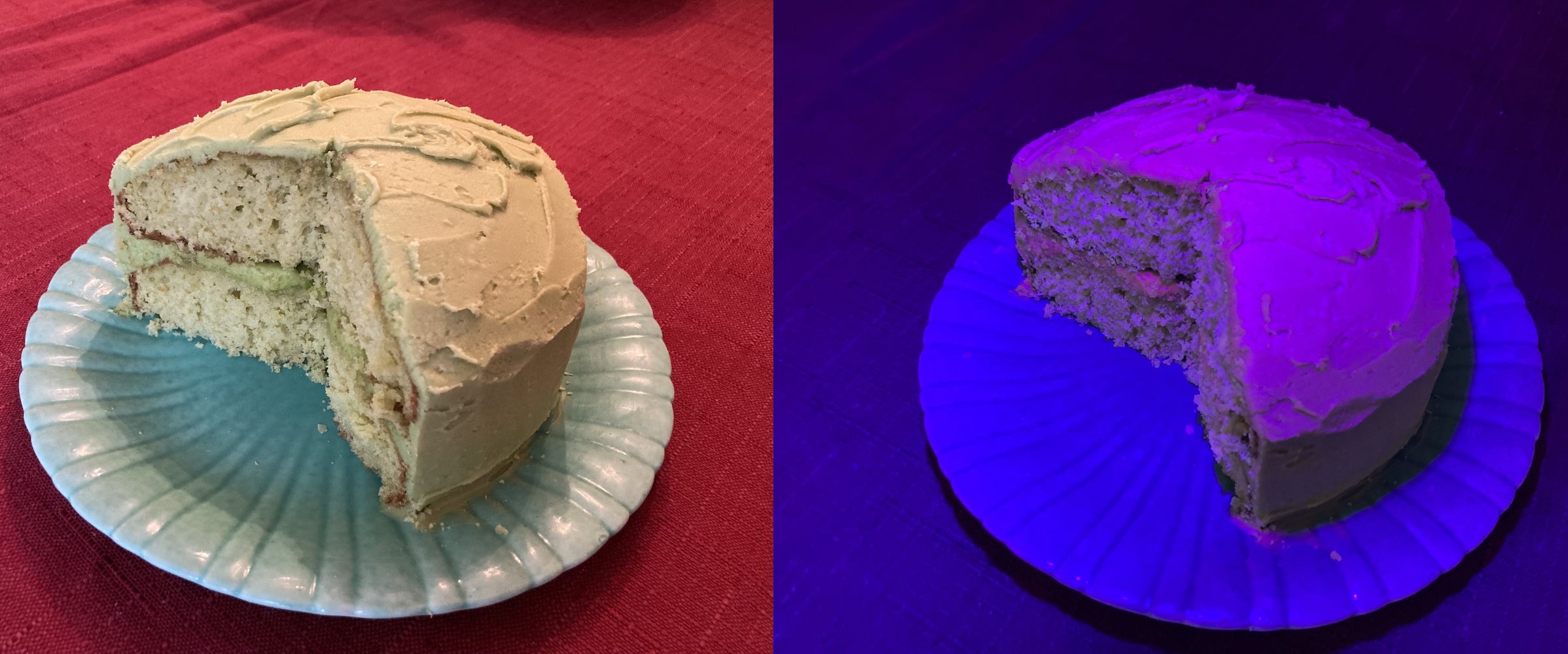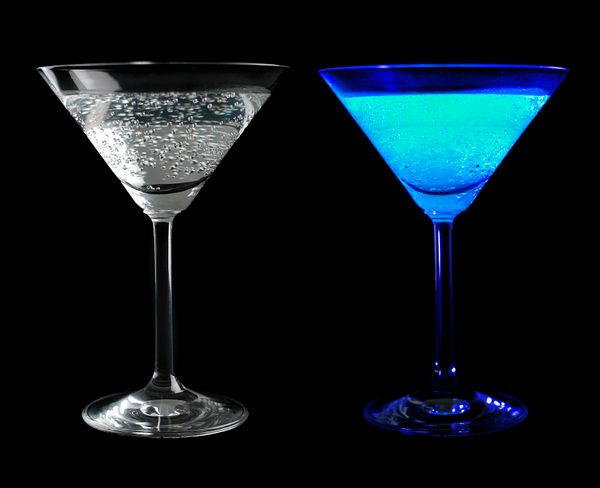[ad_1]
This article is adapted from the December 14, 2024, edition of Gastro Obscura’s Favorite Things newsletter. You can sign up here.
When I was in college, I went to a party that I’ll never forget.
The theme was Alice in Wonderland, and the crowd outside of the house was made up of people dressed as Mad Hatters, Red Queens, and more.
But the real spectacle was inside. There was not a piece of furniture to be seen. The walls of all the empty rooms were covered in newspapers, and all the overhead lights had been replaced with black-light bulbs, filling the air with a purple haze. Someone had used the newspapers as a canvas, drawing giant mushrooms and other psychedelic shapes with white paint that glowed blue in the ultraviolet light.
Someone in that house had paid attention in chemistry class. Of course, there was beer on offer, but everyone was drinking gin and tonics. Because of the black light, the drinks all glowed an eerie blue, due to the quinine in the tonic water.
Even though the police showed up at one point, the party was a huge success—especially those glowing drinks. Food that glows or changes color under certain lighting might seem like an unnatural gross-out gimmick, the kind that I remember showing up in toy commercials from the 1990s. But to me, it was one of the most memorable moments of the night.
I love a good food spectacle. So when my coworker showed me a post about making a fluorescent cake, I knew I had to try baking one myself.

What is fluorescence, anyway?
First, a brief explanation. If you take a gin and tonic into a closet and close the door, it’s not going to glow in the dark. Quinine is fluorescent, not phosphorescent, meaning it does need light to show up in darkness.
Extracted from the bark of the Peruvian cinchona tree, quinine was once the only known treatment for malaria. Quinine’s bitter flavor and near-magical curative properties hid another secret. George Gabriel Stokes, the Irish physicist, coined the term fluorescence in 1852 after scientists observed that a quinine sulfate solution glowed when exposed to what is now known as UV light.
Ultraviolet light, also known as black light, is not visible to humans. Though a black-light bulb will give off a visible purple-blue light, the ultraviolet light that it is also emitting is made up of wavelengths that are too short to be within the visible spectrum for humans.
However, certain substances will absorb UV light, then emit light back, “often in a surprising color,” as noted by Cara Giaimo in an Atlas Obscura article about why some birds glow under ultraviolet light.
That’s why quinine, under UV light, will turn a glass of tonic electric blue. Vitamin B2, also known as riboflavin, emits a sunny yellow glow, and toothpaste sometimes contains ingredients that turn blue under black light, which has the effect of making teeth appear more white.
Outside the minibar and medicine cabinet, there’s another extremely common substance that gives off a shocking glow under ultraviolet light: chlorophyll.

Making a color-changing cake
Chlorophyll is the pigment that makes plants green, and it absorbs sunlight within the chloroplasts that provide plants with energy. It also, I read, would turn a vibrant pink-red beneath UV light. After seeing a picture of a cake laced with chlorophyll to make it fluorescent, I had to give it a try.
So I went to the health-food store and bought a tiny bottle of liquid chlorophyll—which some people consume for its supposed health benefits, ranging from weight loss to improving the skin. Mine was mint-flavored, but I cared less about the taste and more about whether it would change color or not.
I swiped some on a plate under a lamp fitted with a black-light bulb. To my disappointment, it stayed a black blob, without emitting a glimmer of red.
I turned to YouTube, where Adriana Patterson of Sugarologie had posted a video about making a fluorescent cake. Patterson, who has a Ph.D. in biochemistry/molecular biology, has a social media presence and a website dedicated to “the study of sweet science”—baking, not boxing.
Gratefully, I watched the video and learned that chlorophyll is soluble in oil, but not water, which explained why my water-based liquid chlorophyll didn’t fluoresce. Following the steps Patterson laid out, I blasted chlorophyll-packed spinach and clarified butter together in a blender, then strained the liquid through a cloth and discarded the leafy solids. (Other greens, such as parsley or kale, would work just as well.)
Then, I heated the vibrant green butter to a simmer and plugged in my UV lamp right next to the stove. When I turned off the lights, I couldn’t help but cheer. The liquid in the pan had turned a vibrant pink.
The butter, I decided, would be added to my cake frosting once it had solidified a bit. I also followed Patterson’s lead by adding some regular butter to the frosting as well, since, as she explains, clarified butter doesn’t have the protein to give frosting its fluffy texture. As for the cake, I repeated the butter routine with vegetable oil, and opted to add it to a yellow cake mix. I also added some lemon zest and flavoring to the cake, and frosting, in the hopes that it would complement any “green” flavor left by the spinach.
The result? A cake with a light green coloring on the inside and out, that, surprisingly, lacked any spinach flavor at all. And, beneath the black light, it turned a pleasing pink.
If you’d like to see some fluorescence without all this effort, however, I suggest looking for a banana. Under a black light, ripe bananas will glow a glorious blue. A few days later, that same banana will not fluoresce nearly as much, except in rings around the browning spots. Or you could simply pour yourself a glass of tonic water. The gin is optional.
Gastro Obscura covers the world’s most wondrous food and drink.
Sign up for our regular newsletter.
[ad_2]
Source link

